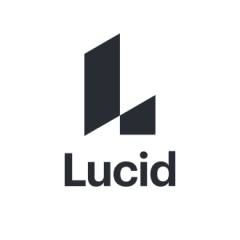I used Lucidchart to design flowcharts for my APIs.
Lucidchart was able to help me design the flow of my APIs. They are quite complicated with many conditional flows and many multiple-table interactions. It would have been difficult for me to jump to the code directly, without having the clarity given me by using Lucidchart.
The problem is that it can be difficult to think about exactly what needs to be done, which is why I started using Lucidchart. I thought that it would be better if I have a pictorial representation of the flow that I wanted to implement in my system. After I had this visual, I went on to start coding it.
I have definitely realized efficiencies in the projects that I have used Lucidchart for, and it has had a major impact. As I am designing the flow of data through an API, I sometimes forget to handle some of the base cases or some of the edge cases. More importantly, there could remain some endpoints that are unfinished, or there could be some endpoints that are broken. However, if I am using a pictorial representation, such as with Lucidchart, I always know that at each particular point, I have not missed an aspect of the design that would explain what happens when a particular condition occurs.
Lucidchart's ability to create a visualization that people prefer to look at, over reading written documents, has definitely saved me a lot of time. Moreover, it has helped to make my code bug-free because I no longer have broken endpoints. For example, the system that I am working on now is pseudo-transactional, which is the model for the flows. This means that I should have a rollback mechanism if some particular condition doesn't succeed.
It is easy to check for a particular condition using a standard If and Else combination in code, but there are some scenarios in which there are nested conditions. Solutions need to implement these as well, which is more difficult. However, this is where Lucidchart helps a lot. On every particular flow, it asks me to design a new system that includes an endpoint.
I have experienced a 40% reduction in development time because I don't have to search for the use cases during the coding phase. Specifically, I don't have to search for the edge cases or the base cases because they are designed in a pictorial representation that is easy to follow. I just have to look at the diagram and write the code.
I may write a best-case scenario when I get the data, but the nested decisions or the conditional statements remain unhandled sometimes. There is always a question of what will happen to the flow if something specific occurs, or in some cases, does not occur. For example, if something is missing from the database or one of the tables, it can be difficult to forecast what the consequence will be. In cases such as this, how you react is something that needs to be defined. You should know what will happen, even when conditions result in the worst case. This is why it is best to have a pictorial representation. It will allow you to easily design fallbacks for the system.
It is important to me that Lucidchart accommodates both Mac and PC users because sometimes when you switch companies, they use a different operating system. At this point, I'm using Linux and Lucidchart is compatible. At some point in time, I may change to another organization or even just change laptops, so I need the functionality to work properly on the other operating system.
The most valuable feature is the charting, which allows me to visualize the workflows that I will be coding.
The flowcharting feature would be improved if it had some kind of prediction capability that helped to create the diagrams, such as the ability to automatically join components with my database. Another example would be having it smartly or automatically add or join conditionals.
I only used Lucidchart for two or three days before my trial subscription expired.
I did not experience any issues with stability or performance.
This product is highly scalable. I didn't have the opportunity to use the presentation feature or collaborate on designing a flowchart or UML diagram or database schema, otherwise, I could have compared it and looked at the behavior.
I have not been in contact with technical support.
Prior to Lucidchart, I did not use a similar product for this task.
The initial setup is not complex. I just used the website.
This is not a time-consuming process and I was able to start using it in just a few minutes.
I have only used the trial version and have not yet paid for it, or explored the pricing options.
After performing a simple Google search of some flow design tools, Lucidchart was the first result. I tried it and found that it was easy to work with. I've yet to explore the pricing and have not looked at other products.
My advice for anybody who is considering this product is that if you have business-related documents that you use to implement a solution, it generally takes a lot of time to build. But, if you're using Lucidchart and you have already designed the flow, including a diagrammatic or pictorial representation of what the flow would be like, then it will reduce the time required to build it. Also, the system will be better.
I would rate Lucidchart an eight out of ten.











